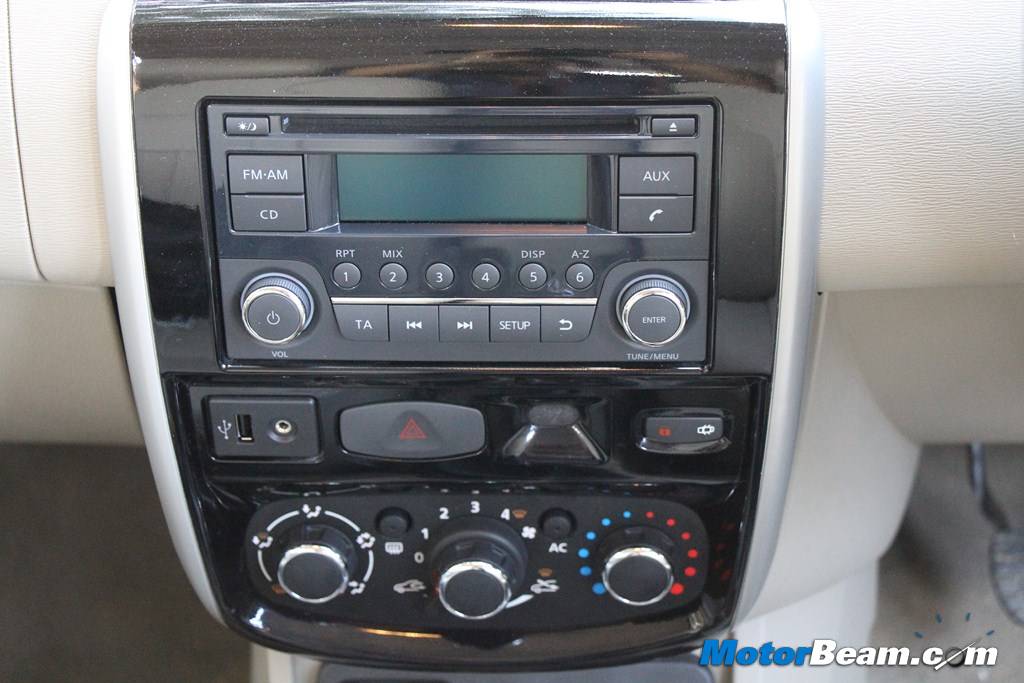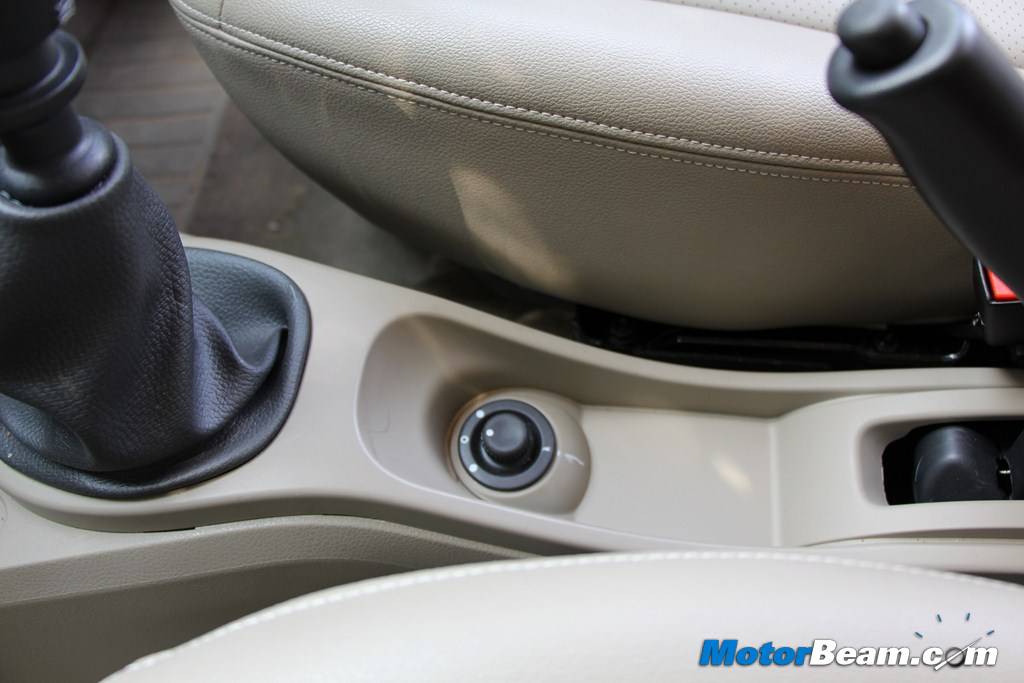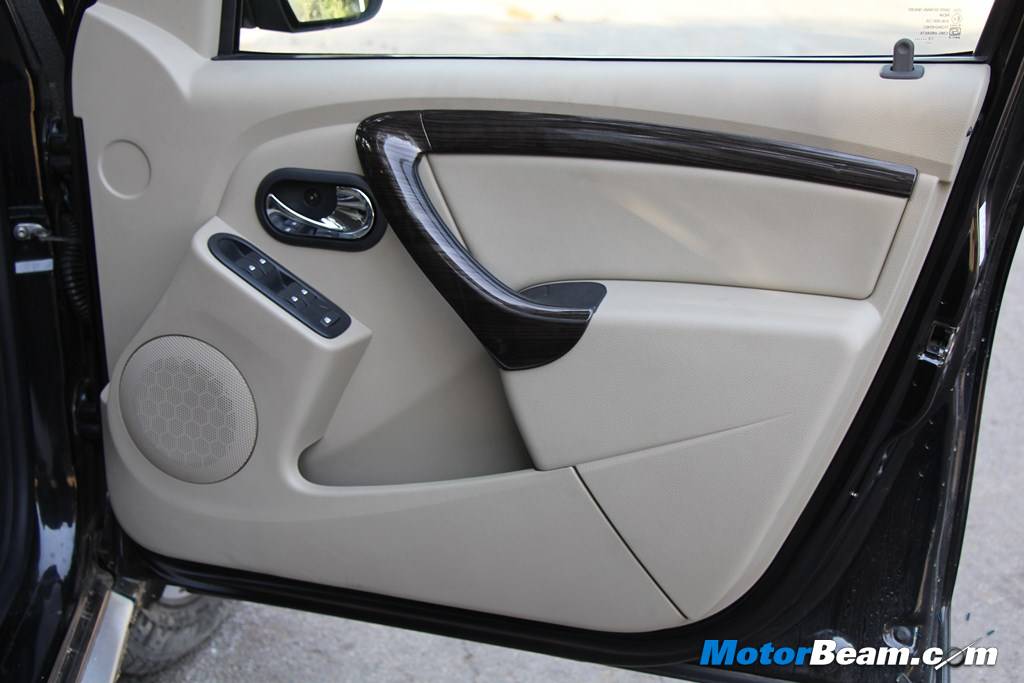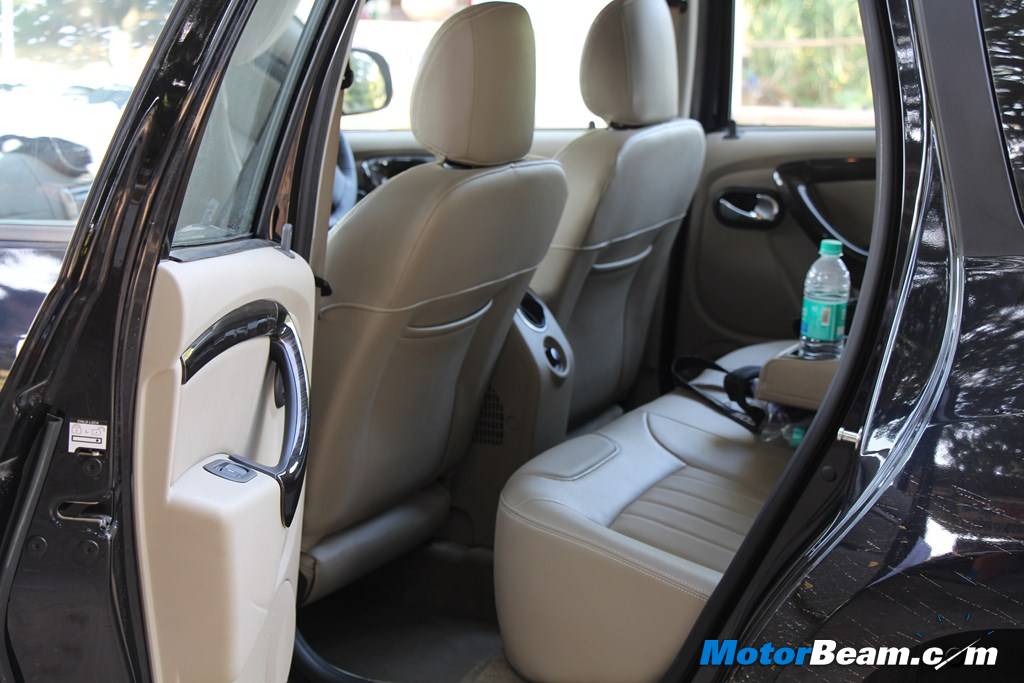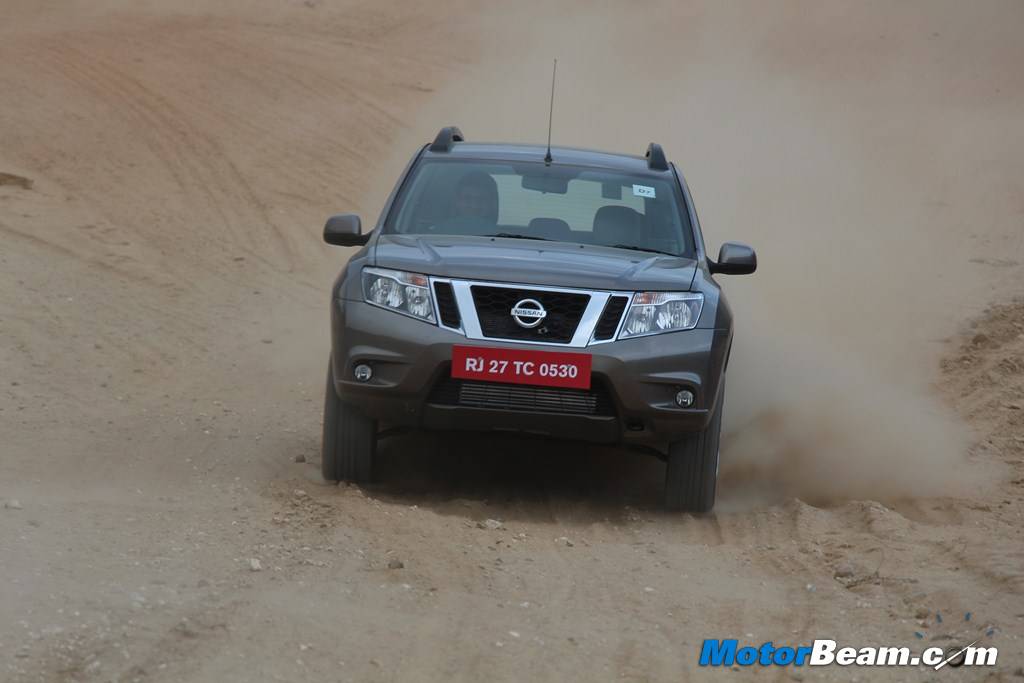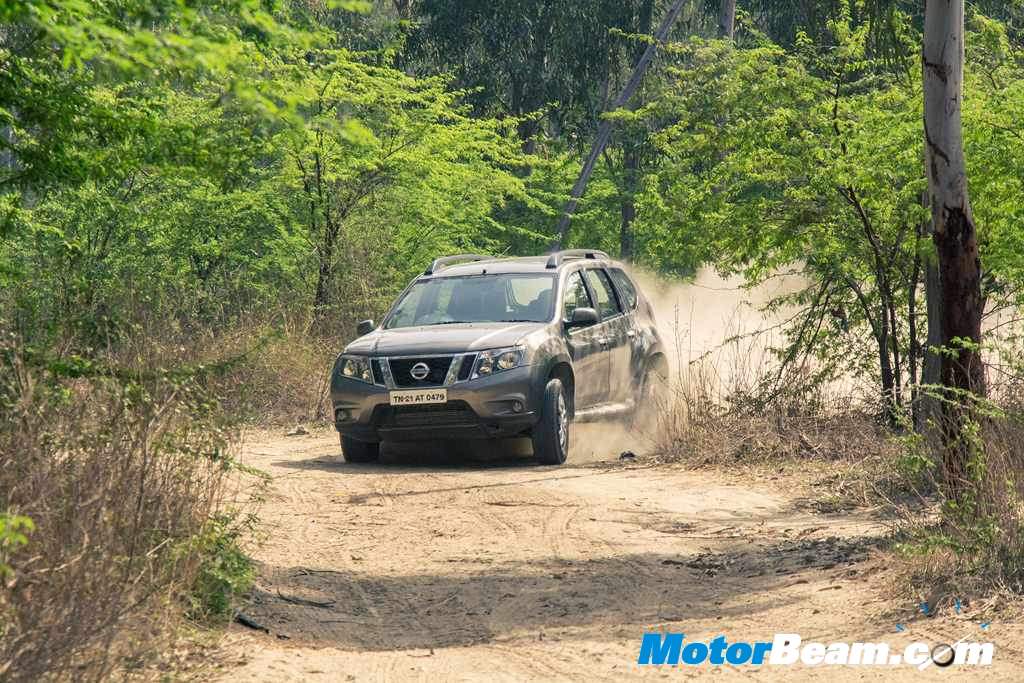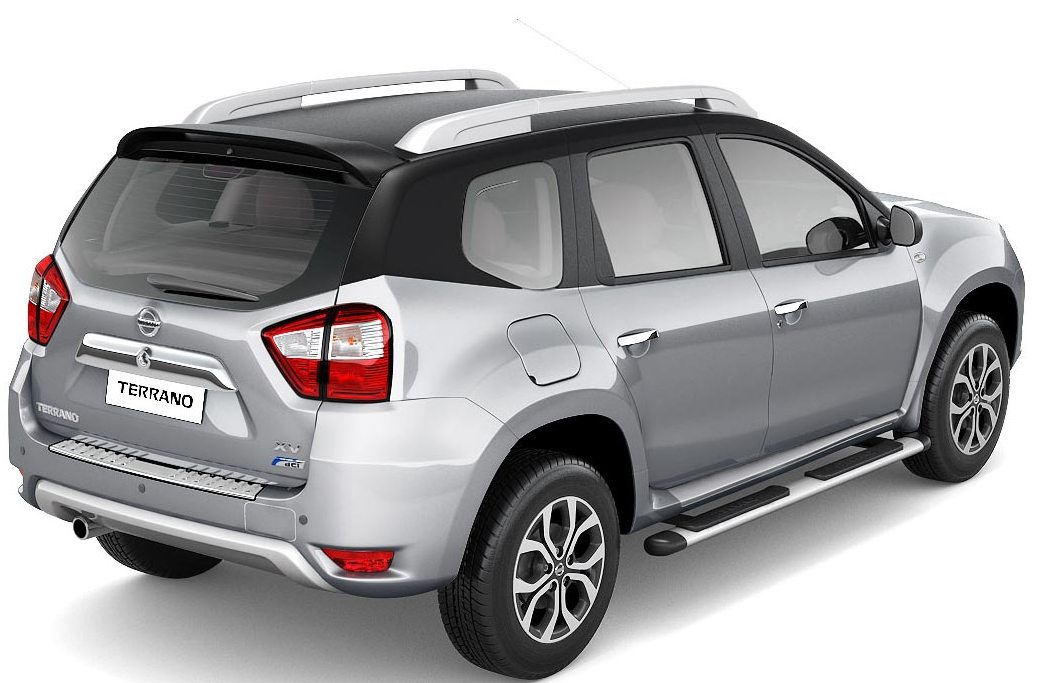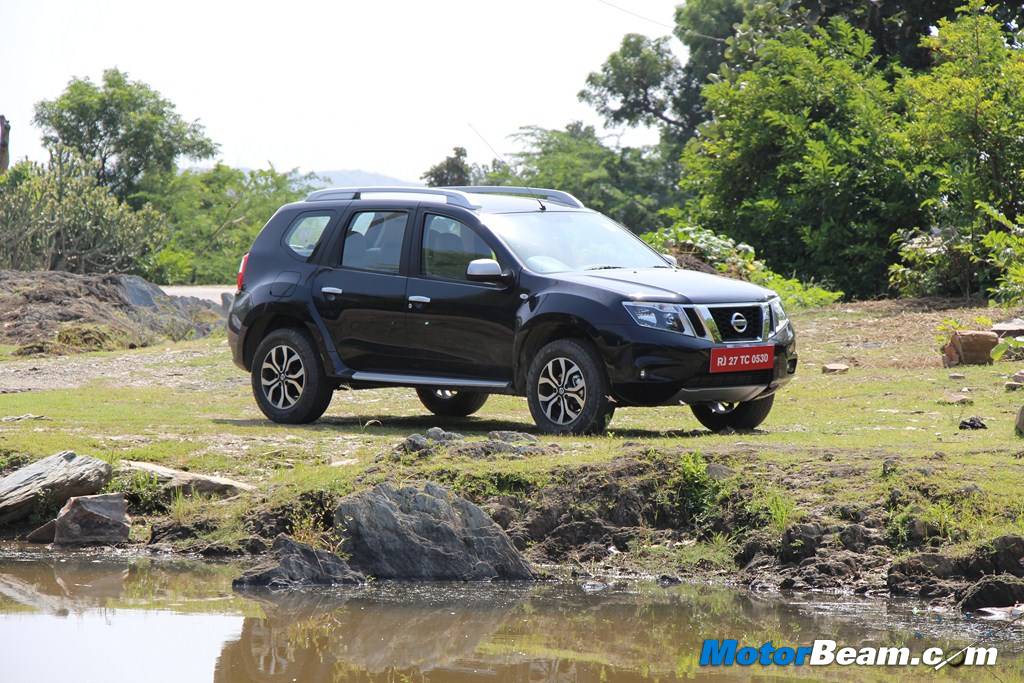
Nissan Terrano Review
Car Tested: 2013 Nissan Terrano
Price OTR Mumbai: Rs. 11.68 – 15.13 lakhs
The Nissan Terrano is a good blend of sharp styling and mature driving dynamics.
The SUV segment in the Indian market is a formidable one. Some products have seen tremendous demand while some even sell in single digits. Of late, the lucrative compact SUV segment has shown significant growth amidst the slowdown. Now Nissan has introduced the Terrano in the Indian market expecting a boost in the carmaker’s sales volume in India. The Terrano is the first badge engineered product in India by Nissan, based on the Renault Duster. According to the Renault-Nissan alliance policies, the badge engineered Nissan Terrano will be positioned above the Renault Duster in terms of pricing. The Japanese automaker has made prominent changes on the Nissan Terrano in order to differentiate the two SUVs. In short, it is a refurbished Renault Duster with a premium layer of icing. Let’s find out what does it taste like.
Motor Quest: The Terrano name was used by Nissan for the Pathfinder in certain markets while the Terrano II was an SUV sold in Europe between 1993 to 2006. The Duster based Terrano is the only car which now uses the Terrano name.
[flickr size=”center” float=”medium”]http://www.flickr.com/photos/motorbeam/9798876275/[/flickr]
Exteriors – First look at the Nissan Terrano won’t remind you of the Renault Duster, as it gets sheet metal changes that make it look fresh and mature. You would appreciate every inch of the updated styling over the Duster, firstly because you are habitual of seeing a Duster frequently and secondly Nissan has treated the Terrano with sharp styling elements against the Duster’s stout build. The front end of the Nissan Terrano points at you. It has sharp bonnet lines and more angular set of headlamps, which are neatly blended with the traditional wide Nissan grille. The carved out front bumper has a broad air inlet and features fog lamps. Notice the fog lamps housing, similar setup can be seen on the 2014 Nissan X-Trail.
[flickr size=”center” float=”medium”]http://www.flickr.com/photos/motorbeam/9798879955/[/flickr]
The side profile of the Terrano reveals the same attitude of the Duster. The robust wheel arches are retained and you get the same roofline with slightly tweaked roof rails. The pillars are blackened out for better contrast and there are a flashy set of twin 5-spoke alloy wheels. The alloys get a chiseled pattern compared to the rather bland ones seen on the Duster. The most significant change on the side profile to notice is the character line that runs straight and strong from the front fender rising towards the rear fender. While on the Duster they provide a mild u-shaped crease that connects the fenders.
[flickr size=”center” float=”medium”]http://www.flickr.com/photos/motorbeam/9798877705/[/flickr]
Coming to the rear strikes your attention towards the twin piece tail light cluster. The tail light units are much bigger and eliminate the sense of incompleteness that the Duster’s rear profile had. Other changes at the rear include redesigned bumper with new arrangement of reflectors and a new number plate housing that is triangular in shape tipped with a thick piece of chrome. The rear windshield is exactly the same as the Duster’s. You won’t see black cladding on the lower section of the body and instead the Terrano comes with single colour body panels which make it look neat and gentle. The overall styling of the Terrano turns up slick and sassy.
[flickr size=”center” float=”medium”]http://www.flickr.com/photos/motorbeam/9798956673/[/flickr]
Interiors – The Nissan Terrano has comfortable ingress and egress. Once you enter the cabin, the beige treatment of interiors gives a good sense of space. Nissan has spruced up the dashboard layout, which feels slightly more premium than the Duster. The storage space on top of the dashboard has been covered now with a lid and the centre AC vents get rectangular in shape with chrome outlining. The instrument cluster covering has a rounded panel and the steering wheel remains the same that gets a rebadged horn pad with silver accents. The centre console is restyled with vertical silver panels running on the sides and piano black panels surrounding the new multimedia system.
These additional embellishments make the interior styling a bit more attractive than the Duster. Quality of the materials used and the fit and finish is exactly the same again, which is much better than the competition but doesn’t feel as premium as a car in this price bracket should feel. The base XE trim comes with black interior, while the rest get beige interior. Colour combination used in the Terrano gels nicely and looks tastefully done, thanks to the piano black finishing. The air conditioning is effective and the vents provide thick flow of air. Everything falls under reach and most of the controls are convenient to use apart from the mirror adjustment control that is placed under the handbrake lever. You will also miss the dead pedal to rest your foot on long drives. Nissan should have addressed the minor ergonomic issues which customers of the Duster have been complaining about since quite some time now.
The door pockets are deep enough to accommodate 1-litre bottles and there is enough spread of cup holders and small storage elements to keep knick knacks. Cabin space needs a special mention here, as there is ample space in both the rows as well as the boot. The seats are sufficiently supportive but lacking a bit of under-thigh support. The 475-litre boot space is practical with a convenient loading lip that can accommodate a good load of luggage. Some of the safety and convenience features offered in the Terrano include dual airbags, ABS, EBD, BA, fog lamps, reverse parking sensors, rear AC, double-din audio system with CD/MP3, USB, AUX and Bluetooth connectivity. Shockingly the steering mounted audio controls found on the Duster are not offered on the Terrano.
[flickr size=”center” float=”medium”]http://www.flickr.com/photos/motorbeam/9798897324/[/flickr]
Performance – The Nissan Terrano shares the same engine lineup that includes 1.6-litre petrol and 1.5-litre k9k diesel engines. The 1.5-litre diesel engine is offered in two states of tune like the Duster, producing 85 PS, 200 Nm and 110 PS, 248 Nm respectively. On our media drive in Udaipur we got to test both the 1.5-litre diesel engine variants. The Renault sourced 1.5-litre k9k diesel engine is a gem and both 85 PS and 110 PS versions have their own merits. The 85 PS diesel gets the hold of power immediately with a fractional amount of turbo lag. It provides continual power delivery right from the word go until the mid-range, post which the power starts fading away. This particular setup is ideal for city driving conditions where you need initial and mid-range grunt. The engine feels lively from a low 1200 RPM till 3500 RPM. Above 4000 RPM the power feels inflexible.
[flickr size=”center” float=”medium”]http://www.flickr.com/photos/motorbeam/9798906446/[/flickr]
The Terrano 85 PS gathers speed till 130 km/hr without much effort and the engine feels creamy. Reaching 140 km/hr and above is time consuming and after that the engine feels worked out. Mated to the 85 PS engine is a 5-speed manual gearbox with perfect ratios for city driving conditions. You don’t need to work the gearbox for ambling around town, as it has minimal turbolag. The 85 PS can even be kicked off in the second gear at dead speeds. The gear ratios are even sorted for winding inclines but out on the highway you need to downshift for slick and speedy overtaking. At 100 km/hr the RPM needle hovers around 2500 RPM.
[flickr size=”center” float=”medium”]http://www.flickr.com/photos/motorbeam/9798950113/[/flickr]
Coming to the 110 PS diesel, the turbo lag ailment is there being a thick one until 2000 RPM, post which the turbo kicks in and you get a good boost of twisting power with some torque steer. The torque wave is enjoyable to ride on once you get used to the gear ratios and maintain your gearshifts within the turbo zone. The real action lies in the mid and top range of the rev band, which makes the 110 PS Terrano a terrific highway cruiser. The engine feels creamy throughout the range with top notch refinement. The 1.5-litre engine enjoys revving up to 5000 RPM.
[flickr size=”center” float=”medium”]http://www.flickr.com/photos/motorbeam/9798882604/[/flickr]
Mated to the 110 PS version is a 6-speed manual gearbox. It is a rather long legged transmission, which is very convenient on the highways. At 100 km/hr in sixth gear the engine spins around 2200 RPM being in the turbo band, which means the car has relaxed cruising ability with enough grunt for high speed overtaking. There is no need to downshift for overtaking trucks as far as you are in the turbo zone. On the flip side, the engine needs to be learnt for city driving and steep incline sections. The initial turbo lag has to be treated with frequent downshifts otherwise you tend to do clutch slips. The clutch operation feels a bit stiff, which adds to the hectic drivability in congested traffic but it’s not a deal breaker as you would enjoy this engine once you get a hang of it.
Driving Dynamics – The beautiful synergy between ride and handling is already appreciated on the Duster and same is the case with the Terrano. The well balanced suspension provides excellent comfort at highway speeds as well as city runabouts. It keeps away the mild bumps while the big potholes just penetrate thuds inside the cabin keeping the body movement well under control thanks to the monocoque chassis. However the suspension setup feels a bit on the stiffer side but that sense of stiffness makes you feel confident on corners and high speeds, evading vertical and bouncy movement. The flat ride quality is unbeatable, even to some cars belonging from segments above the Terrano.
[flickr size=”center” float=”medium”]http://www.flickr.com/photos/motorbeam/9798885554/[/flickr]
The Nissan Terrano has a front-wheel drive setup and the facile car like dynamics makes it one of the best handling SUVs in its segment, which you would realise as soon as you hit a curve. The driver doesn’t have to be prepared for a corner. The Terrano enters the corner neatly with negligible body roll and departs with a composed line, unlike most of the SUVs. By OEM tyre standards, the 215/65/16 MRF Wanderer tyres offer decent grip. Adding to the sense of confidence is the well calibrated steering wheel that provides definite feedback off the centre. At parking speeds the steering feels minutely heavy though and when you hit bad roads while turning, it does shudder and vibrate.
[flickr size=”center” float=”medium”]http://www.flickr.com/photos/motorbeam/9798884324/[/flickr]
Considering the fact that the Terrano is a decently sized SUV, a set of winding roads feels like nirvana. The Terrano enjoys to be pushed around the corners but pushing it too hard will provide some understeer. The NVH levels are good and engine noise is kept well under control but wind and tyre noise is audible to some extent inside the cabin. Coming to the braking performance of the Terrano, it is equipped with front discs and rear drum brakes. It sheds speed quickly with the ABS working well and minimal nose dive but brake pedal feedback could be crispier at high speeds. No it’s not an off-roader as the Terrano comes with a 2-wheel drive setup, which doesn’t work well on grassy and slushy terrains. However it comes with high ground clearance with which you can do mild off-roading provided there is good traction.
[flickr size=”center” float=”medium”]http://www.flickr.com/photos/motorbeam/9798907206/[/flickr]
Verdict – After driving the Nissan Terrano on the dynamic roads of Udaipur, we are out and out impressed by the capabilities of the compact SUV. Keeping all the good characteristics of the Duster intact, Nissan has successfully managed to give the Terrano its own individuality by sprucing up the styling significantly. It looks more premium and fresh. But, its success in the market will totally depend on its pricing. There are a few bits which could have been improved such as the wind noise, brake pedal feedback, mirror adjustment control placement, etc. Nissan should understand that customers are well-read and using taglines like “The Newest Icon In Innovation” is misleading as the Terrano brings nothing new to the table. With the news of an updated Duster coming soon, the Terrano will have to face competition from its own backyard.
Nissan has done a good job of improving the Duster but mechanically there is nothing new in the Terrano, which makes it tough for Nissan to justify its premium pricing for merely cosmetic differences.
[flickr size=”center” float=”medium”]http://www.flickr.com/photos/motorbeam/9798872675/[/flickr]
What’s Cool
* Styling
* Dynamics
* Space
What’s Not So Cool
* Duster in new clothes
* Premium positioning and pricing
Alternatives: Ford EcoSport, Renault Duster
[flickr size=”center” float=”medium”]http://www.flickr.com/photos/motorbeam/9798880775/[/flickr]
2013 Nissan Terrano Specifications
* Engine: 1598cc, 1.6 K4M (Petrol), 1461cc dCi K9K (Diesel)
* Power: 104 PS (P), 85 PS (85 PS Diesel), 110 PS (110 PS Diesel)
* Torque: 145 Nm (P), 200 Nm (85 PS Diesel), 248 Nm (110 PS Diesel)
* Transmission: 5-speed manual (P and 85 PS D), 6-speed manual (110 PS D)
* Fuel Consumption (ARAI): 13.24 km/l (P), 20.46 km/l (85 PS), 19.01 km/l (110 PS)
* Fuel Type: Petrol and Diesel
* Suspension: Independent McPherson Strut with Coil Springs and Anti-Roll Bar (Front), Torsion Beam Axle with Coil Springs and Anti-Roll Bar (Rear)
* Tires: 215/65/16 Tubeless Radials
* Brakes: Hydraulically Operated Diagonal Split Dual Circuit Braking; Ventilated Disc (Front), Drums (Rear), ABS, EBD
* Safety: ABS, EBD, Dual Front Airbags, Engine Immobilizer
2013 Nissan Terrano Dimensions
* Overall length x width x height: 4315 mm X 1822 mm X 1695 mm
* Wheelbase: 2673 mm
* Front/Rear Track: 1560/1567 mm
* Ground clearance: 205 mm
* Turning Radius: 5.2 m
* Boot Volume: 475 liters, 1064-liters (with rear seats folded)
* Fuel Tank Capacity: 50-liters
* Kerb Weight: 1160-1306 kgs


